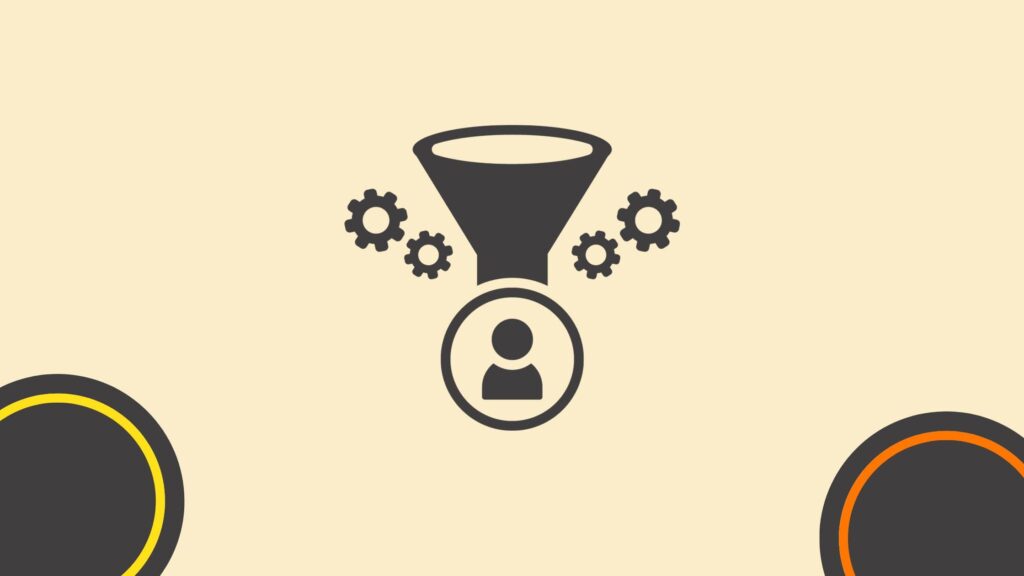How to Enrich your Inbound Leads Data?
In the modern era of business, data is king. And when it comes to driving growth and generating revenue, there is one particular type of data that reigns supreme – inbound leads data. Understanding the importance of inbound leads data enrichment is critical for any business looking to thrive in a competitive landscape.
Chapters
- Comprendre l'importance des données sur les prospects entrants
- Le rôle des leads entrants dans la croissance de l'entreprise
- Leads entrants et leads sortants : une analyse comparative
- Les bases de l'enrichissement des données
- Avantages de l'enrichissement de vos données sur les prospects entrants
- Étapes pour enrichir vos données de prospects entrants
- Assurer la qualité et la cohérence des données
- Tirer parti des données enrichies pour les stratégies commerciales
- QFP
Understanding the Importance of Inbound Leads Data

When we talk about inbound leads, we are referring to the potential customers who have expressed interest in your products or services. These leads are a valuable asset, as they have already shown some level of intent or engagement. Harnessing the power of this data can provide you with valuable insights into the customer journey and enable you to tailor your strategies accordingly.
Understanding the importance of inbound leads data goes beyond just recognizing their value. It involves delving into the details and uncovering the wealth of information that can be extracted from these leads. By analyzing the patterns and behaviors of your inbound leads, you can gain a deeper understanding of their preferences, pain points, and motivations.
For example, let’s say you run an e-commerce store that sells athletic shoes. By examining the inbound leads data, you may discover that a significant portion of your leads are coming from social media platforms, particularly from fitness enthusiasts who follow popular fitness influencers. Armed with this knowledge, you can develop targeted marketing campaigns that specifically cater to this audience, leveraging the power of social media to reach and engage with potential customers.
The Role of Inbound Leads in Business Growth
By leveraging inbound leads data, businesses can effectively identify the most promising prospects and focus their efforts on nurturing and converting them into loyal customers. This targeted approach not only saves time and resources but also increases the likelihood of success. Inbound leads play a crucial role in fueling business growth and propelling revenue generation.
Furthermore, inbound leads data can help businesses optimize their sales and marketing strategies. By analyzing the data, you can identify the most effective channels and touchpoints for lead generation. This allows you to allocate your resources more efficiently, ensuring that you are investing in the channels that yield the highest return on investment.
Additionally, inbound leads data can provide valuable insights into the effectiveness of your website and landing pages. By tracking the conversion rates of different lead sources, you can identify areas for improvement and optimize your website to better capture and convert leads.
Inbound Leads vs Outbound Leads: A Comparative Analysis

While both inbound and outbound leads have their merits, it’s important to understand how they differ. Inbound leads are generated by customers who actively seek out your business, often through organic channels like search engine queries or word-of-mouth referrals. On the other hand, outbound leads are obtained through proactive prospecting efforts, such as cold-calling or email outreach. Comparing the two approaches can help you determine which type of lead data is more valuable for your business and where to focus your efforts.
One of the key advantages of inbound leads is their higher level of intent. Since these leads have already expressed interest in your products or services, they are more likely to be receptive to your marketing efforts. In contrast, outbound leads may not be as receptive, as they may not have actively sought out your business.
Another aspect to consider is the cost-effectiveness of each approach. Inbound leads are often more cost-effective, as they are generated through organic channels and do not require extensive outreach efforts. Outbound leads, on the other hand, may require significant resources and time investment to identify and engage with potential customers.
Ultimately, the choice between inbound and outbound leads depends on your business goals, target audience, and available resources. By analyzing the comparative data and understanding the unique benefits of each approach, you can make informed decisions that align with your business objectives.
The Basics of Data Enrichment
What is Data Enrichment?
Data enrichment is the process of enhancing your existing leads data by appending additional information to it. This additional information can range from demographic details and firmographic data to social media profiles and behavioral insights. By enriching your inbound leads data, you gain a more comprehensive understanding of your target audience, which in turn helps you craft personalized marketing campaigns.
Data enrichment is a powerful tool that allows businesses to go beyond the basic contact information of their leads. It enables them to delve deeper into the characteristics and behaviors of their potential customers. By adding more data points to their existing leads, businesses can create a more detailed and accurate profile of their audience.
For example, let’s say a company has a lead’s name, email address, and job title. With data enrichment, they can append additional information such as the lead’s age, gender, location, and industry. They can also gather insights about the lead’s social media activity, online behavior, and preferences. This wealth of information helps businesses understand their audience on a much deeper level.
Benefits of Enriching Your Inbound Leads Data
The advantages of enriching your inbound leads data are manifold. Firstly, it allows you to gain deeper insights into your customers’ preferences, pain points, and purchasing behavior. Armed with this knowledge, you can create tailored content and offers that resonate with your audience, increasing the chances of conversions.
Imagine having a comprehensive understanding of your target audience’s pain points and challenges. With enriched data, you can identify the specific pain points that your product or service can address. This knowledge enables you to create content that directly speaks to your audience’s needs, making your marketing efforts more relevant and impactful.
Secondly, enriched data enables you to segment your customer base more effectively, allowing for more targeted and personalized communication. By categorizing your leads based on their demographics, interests, and behaviors, you can tailor your messaging to each segment. This level of personalization enhances the customer experience and increases engagement.
Furthermore, enriched data provides a solid foundation for predictive analytics and customer profiling, empowering you to make data-driven business decisions. By analyzing the enriched data, you can identify patterns and trends that can help you predict future customer behavior. This predictive capability allows you to optimize your marketing strategies and allocate resources more efficiently.
For instance, if your enriched data reveals that a significant portion of your target audience is active on a particular social media platform, you can focus your advertising efforts on that platform. This targeted approach ensures that your marketing messages reach the right people at the right time, maximizing your return on investment.
In conclusion, data enrichment is a valuable process that goes beyond basic lead information. It provides businesses with a deeper understanding of their audience, enabling them to create personalized marketing campaigns, segment their customer base effectively, and make data-driven decisions. By harnessing the power of enriched data, businesses can stay ahead of the competition and drive meaningful results.
Steps to Enrich Your Inbound Leads Data

Identifying the Right Data Points
Before you embark on the journey of enriching your inbound leads data, it’s crucial to determine the specific data points you need to focus on. Consider your business objectives and target audience, and identify the information that would be most valuable for your marketing efforts. This could include demographic data, behavioral information, or even psychographic insights.
Implementing Data Enrichment Tools
Once you have identified the data points you require, it’s time to leverage data enrichment tools to append the additional information to your existing lead data. There are numerous tools available in the market that can automate the data enrichment process, saving you time and effort. These tools often utilize artificial intelligence and machine learning algorithms to deliver accurate and up-to-date information.
Ensuring Data Quality and Consistency
Regular Data Auditing and Cleaning
As with any data-driven initiative, ensuring data quality is paramount. Regularly auditing and cleaning your enriched inbound leads data helps maintain its accuracy and relevance. Identify data discrepancies or inconsistencies and take appropriate steps to rectify them. Use data validation techniques and employ data cleansing tools to remove redundancies and errors. Remember, quality data leads to quality insights.
Maintaining Data Privacy and Security
With data privacy becoming an increasingly important concern, safeguarding your enriched inbound leads data is critical. Implement robust security measures to protect sensitive customer information from unauthorized access or breaches. Familiarize yourself with relevant data protection regulations and ensure compliance at all times. Building trust with your customers is essential for long-term success.
Leveraging Enriched Data for Business Strategies
Enhancing Customer Segmentation with Enriched Data
Enriched inbound leads data significantly enhances your ability to segment your customer base. By dividing your audience into distinct groups based on shared characteristics, you can tailor your messaging and marketing campaigns to resonate with each segment. This targeted approach not only improves customer engagement but also increases the likelihood of conversions, ultimately boosting your bottom line.
Optimizing Marketing Strategies with Enriched Inbound Leads Data
Enriched inbound leads data serves as a compass for your marketing strategies. With a deeper understanding of your target audience, you can optimize your marketing efforts to focus on the channels and tactics that yield the best results. By identifying the most effective marketing touchpoints and analyzing customer behavior patterns, you can allocate your resources more efficiently and maximize your return on investment (ROI).
Enhancing your inbound leads data through enrichment is an invaluable investment in the success of your business. By leveraging the power of data, you can gain a competitive edge, drive growth, and nurture meaningful customer relationships. Embrace data enrichment as a strategic imperative, and watch your business flourish.
FAQ
What is lead enrichment, and why is it important for inbound leads?
Lead enrichment is the process of enhancing inbound lead data with additional information, such as demographics, firmographics, or behavioral insights. It is important for inbound leads as it provides a more comprehensive understanding of leads, enabling better targeting, segmentation, and personalized communication.
How can B2B businesses enrich inbound leads data effectively?
B2B businesses can enrich inbound leads data effectively by using data enrichment tools or services that provide access to databases with comprehensive information about individuals or companies. These tools can append missing data points, update outdated information, and provide valuable insights to better qualify and prioritize leads.
What types of information can be enriched for inbound leads?
Information that can be enriched for inbound leads includes company size, industry, revenue, employee count, job titles, social media profiles, technographic data (e.g., software usage), and engagement history (e.g., website visits, content downloads, email interactions).
How can lead scoring be improved through lead enrichment?
Lead scoring can be improved through lead enrichment by incorporating additional data points into the scoring model, such as company attributes, online behavior, or purchase intent signals. Enriched data provides a more accurate representation of lead quality, allowing businesses to prioritize and allocate resources more effectively.
What are the benefits of using third-party data sources for lead enrichment?
Third-party data sources for lead enrichment offer access to extensive databases and specialized data providers, enabling businesses to enrich inbound leads data with accurate and up-to-date information. These sources provide valuable insights that may not be available from internal sources alone, enhancing lead qualification and segmentation efforts.
How can marketing automation platforms facilitate lead enrichment processes?
Marketing automation platforms can facilitate lead enrichment processes by integrating with third-party data providers or enrichment services to automatically append and update lead data in real-time. Automated workflows can trigger enrichment actions based on lead interactions or milestones, ensuring data accuracy and consistency across systems.
What role does data privacy and compliance play in lead enrichment practices?
Data privacy and compliance are critical considerations in lead enrichment practices, especially with the implementation of regulations such as GDPR and CCPA. Businesses must ensure that lead enrichment activities comply with relevant privacy laws and obtain consent from leads for data processing and enrichment activities.
How can enriched lead data improve lead nurturing and conversion rates?
Enriched lead data provides deeper insights into lead preferences, interests, and pain points, enabling businesses to tailor their lead nurturing efforts more effectively. Personalized communication based on enriched data increases engagement and relevance, ultimately improving conversion rates and driving revenue growth.
What strategies can businesses use to verify and validate enriched lead data?
Businesses can use strategies such as cross-referencing data from multiple sources, conducting manual validation checks, and implementing data hygiene processes to verify and validate enriched lead data. Regular audits and reviews ensure data accuracy and reliability, minimizing the risk of errors or inconsistencies.
How can enriched lead data contribute to sales and marketing alignment?
Enriched lead data provides sales and marketing teams with a shared understanding of lead characteristics and preferences, fostering alignment and collaboration throughout the customer journey. By leveraging enriched data insights, teams can coordinate efforts more effectively, target leads with relevant messaging, and drive revenue growth collectively.
What role does data appending play in enriching inbound leads data?
Data appending involves adding missing or additional information to existing lead records, such as email addresses, phone numbers, or job titles. By leveraging data appending services, businesses can enhance the completeness and accuracy of their inbound leads data, improving lead segmentation and targeting efforts.
How can B2B businesses use IP lookup tools to enrich inbound leads data?
B2B businesses can use IP lookup tools to identify the companies visiting their website based on their IP addresses. By matching IP addresses to firmographic data, such as industry, company size, or location, businesses can enrich inbound leads data with valuable insights and prioritize high-value accounts for outreach.
What are some common challenges businesses face when enriching inbound leads data?
Common challenges businesses face when enriching inbound leads data include data quality issues, such as inaccuracies or incompleteness, data integration challenges across systems and platforms, compliance with data privacy regulations, and the cost associated with acquiring and maintaining enriched data sources.
How can data enrichment contribute to more effective lead segmentation strategies?
Data enrichment enables businesses to segment leads based on a wider range of criteria, such as firmographics, technographics, and behavioral insights. By creating more granular lead segments, businesses can tailor their marketing messages and content to the specific needs and interests of different audience segments, increasing relevance and engagement.
What role do predictive analytics play in lead enrichment and qualification?
Predictive analytics use advanced algorithms and machine learning techniques to analyze historical data and predict future outcomes, such as lead behavior or likelihood to convert. By incorporating predictive analytics into lead enrichment processes, businesses can identify high-potential leads, prioritize outreach efforts, and improve overall lead qualification accuracy.
How can enriched lead data help businesses identify cross-selling and upselling opportunities?
Enriched lead data provides businesses with a comprehensive view of lead preferences, purchase history, and engagement patterns, enabling them to identify cross-selling and upselling opportunities more effectively. By analyzing enriched data insights, businesses can offer relevant products or services to existing customers, driving additional revenue growth.
What strategies can businesses use to maintain data accuracy and freshness in enriched lead records?
Strategies to maintain data accuracy and freshness in enriched lead records include implementing regular data cleansing and validation processes, updating records with new information obtained from ongoing interactions, leveraging real-time data enrichment services, and establishing clear data governance policies and procedures.
How can enriched lead data support account-based marketing (ABM) strategies?
Enriched lead data provides valuable insights into target accounts, including firmographics, decision-makers, and purchase intent signals, supporting account-based marketing (ABM) strategies. By enriching lead data with account-level attributes, businesses can personalize outreach efforts, create targeted content, and tailor marketing campaigns to specific account needs and preferences.
What role does artificial intelligence (AI) play in automating lead enrichment processes?
Artificial intelligence (AI) technologies, such as machine learning algorithms and natural language processing (NLP), can automate lead enrichment processes by analyzing large volumes of data and identifying patterns or trends. AI-powered enrichment tools can streamline data processing tasks, improve data accuracy, and enhance lead qualification efficiency.
How can businesses measure the return on investment (ROI) of their lead enrichment efforts?
Businesses can measure the ROI of their lead enrichment efforts by tracking key performance indicators (KPIs) such as lead conversion rates, sales pipeline velocity, and customer lifetime value (CLV). By comparing the cost of lead enrichment activities to the resulting revenue generated from enriched leads, businesses can assess the effectiveness and profitability of their investment.
Top AI Marketing Generators
Master the Art of Video Marketing
AI-Powered Tools to Ideate, Optimize, and Amplify!
- Spark Creativity: Unleash the most effective video ideas, scripts, and engaging hooks with our AI Generators.
- Optimize Instantly: Elevate your YouTube presence by optimizing video Titles, Descriptions, and Tags in seconds.
- Amplify Your Reach: Effortlessly craft social media, email, and ad copy to maximize your video’s impact.